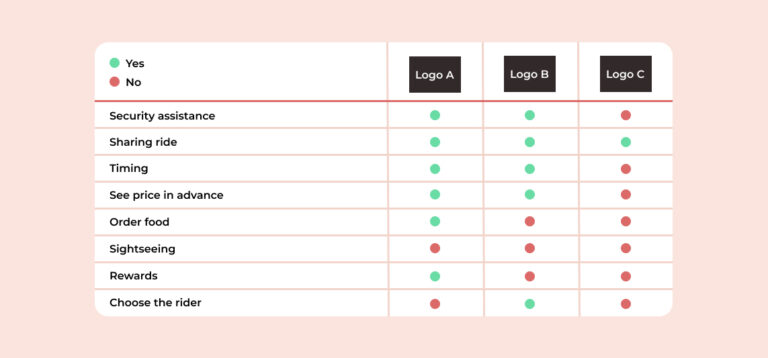Thoughtful user experiences can positively impact customer retention

Tips to improve customer retention
There are many UX tricks that improve customer retention. Essentially, all you need is a:
- Thoughtful
- Instructive
- Inclusive
- Consistent design
Picture this…

You’ve developed an exciting, new product. You’ve rolled out your onboarding. Not only that, but you’re confident you have developed around thorough research to solve your customers’ problems. However, you realize that your analytics are displaying something else. Customers are interested in engaging with your product, yet they do not return after their initial visit.
Where are you going wrong?
You can think of it as if you’ve invited a friend to visit your newly built house. For example, without proper directions or a confusing jumble of directions, they will get lost on the way. When they finally arrive, perhaps they need to perform several tasks to get past a security system. And then once through these hurdles, your friend now finds that the stairs to your front door are steep and there’s only a thin, flimsy handrail. While these design choices made sense in the beginning blueprints, your friend may feel frustrated and exhausted before even entering past the threshold.
Similarly, a user’s journey through your product is more enticing when roadblocks to their desired goal are removed. In essence, the harder it is for your customers to intuitively and easily find their way through your website or application, the less likely they’ll want to return.
But don’t worry, we will cover a few ways you can improve your customer retention.
In this article, expect to learn several UX tips that improve customer retention.
We will help you identify…
- where your blockers may be
- what you can do to improve on them
- and how you can make your user experience (UX) enticing to your customer
Streamline your onboarding
The onboarding process creates a first impression for your user. This experience invites users to explore your product so make sure it is clear, simple, and delightful. This is not the place to ask for too much personal information, use technical jargon, or provide too much information. Otherwise, the experience will be frustrating. Onboarding sets the tone for the entire experience, and is a pivotal moment for customer retention. A customer may be reluctant to dive into your product if you are flooding them with ambiguity or lack clear instruction all together.
Instead, try to make onboarding fast and fun by:
- Limiting information mining
- Add animations
- Add rewards for completion to give users a satisfying sense of mastery
- Provide guides, pop-ups, and highlights the customer can follow
These touches of delight bring joy while teaching them how to navigate. Combining a simple guide or tutorial on how to use your product, along with a sense of satisfaction upon learning your design systems, removes both problems of inundating your customer with instructions or not providing enough help to use your product.
Thoughtful design consistency
You’re excited to roll out innovative design and interactions immediately. However, over-complicating usability may turn users away.
Consider the heuristics of each page and evaluate if more content chunking is necessary, better text hierarchy needs to be implemented, or more complex navigation systems need to be simplified. Keeping design systems consistent and simple throughout the product removes confusion with navigation, calls to action, and readability.
Avoid major blunders
Download our free checklist to help you keep track of what items to review to improve the user experience of your website.

Additionally, well-established iconography or navigation will spark immediate recognition with your customer and remove the frustration of learning new conventions for a search bar or navigation menu. Introducing recognizable patterns — instead of patterns the user must memorize and recall specifically for your website or application — makes the overall experience easier and faster.
Use a design system
It may be tempting to throw out what you already have and redesign from the ground up. However, drastic changes to design systems mean the customer must relearn how to use the product. Rather than provide delight, it may cause frustration and confusion when systems no longer work as expected. Consistency in your UX design — especially for major functions — helps your customers retain the information they need to use your product with ease. Consistent systems create a more coherent brand that customers can quickly identify. Ultimately, this making it easy for users to return and better utilize the product.
Consider accessibility
Remember to keep accessibility top of mind!
While some design choices may be interesting and fun, it’s important to remember that not all users across the board are 100% able-bodied and neurotypical. Accommodating users with disabilities includes practices such as:
- allow for larger text
- adding transcripts for videos
- using color palettes that accommodate color-blind individuals
Check in with the latest Web Content Accessibility Guidelines (WCAG). Additionally, audit your product to see where access can be improved. Furthermore, by designing for a broader spectrum of customers, all customers can benefit from the additional ease of access.
Test regularly
Above all, remember to test, test, and test again.
After a launch, continue to test your product on users. User testing helps to identify how the product can be improved. Testing also provides qualitative and quantitative data that identifies where customers experience the most pain. Listening to the pains of your users and improving upon the design will also entice them to return to enjoy the newest iteration and feel their needs are being taken care of into the future. To learn more, check out 5 Benefits of User Testing or A Guide for User Testing.
Building a stronger relationship with your audience improves customer retention.
Try these tips:
- Test with your users often
- Listen to the needs of your customers
- Iterate based on user testing trends
Customers may need the solution you have to offer for them. Although, without good UX practices you may be losing customers by not solving their problems
In conclusion, by utilizing these tips you can create a better user experience that will have your customers coming back.
Learn more by checking out these resources
- 7 UX Tweaks That Exponentially Improve Customer Retention by Design Rush.
- User Onboarding – UX Design Strategies For Better Customer Retention by Userlytics.
- How Do the Best Companies Retain Customers by UX Magazine











